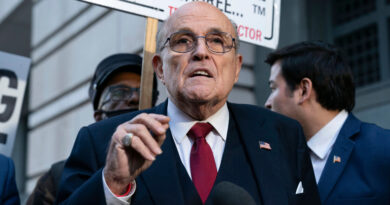The Voting Reforms the GOP Should Consider

The 2020 presidential election was a close-run affair. Although Joe Biden triumphed by more than seven million votes nationwide, he only narrowly carried several states. A shift of just 43,000 votes would have reelected President Donald Trump. His supporters would have been pleased, of course, but dissatisfaction with the Electoral College would have exploded.
It would have been the second successive race to go to the candidate with fewer votes. The popular vote margin for the loser would have more than doubled. Perhaps worse, even the Electoral College would not have been enough to decide the race.
Flipping Arizona, Georgia, and Wisconsin, which collectively went for Biden by 42,918 votes, would only have resulted in a 269-269 tie. (Another 22,642 votes would have been necessary in Nebraska’s second congressional district to add one more elector, and thus give Trump outright victory.) That would have sent the contest to the House. Although the GOP lost the battle for control by about 10 votes — there currently are three vacancies, two of which probably will go Republican — that party controls 26 state delegations, the bare majority necessary to choose.
Imagine President Trump reelected by such a process. A minority of voters chose him. He failed to command a majority of electors. A minority of House members supported him. Yet he still won reelection. His legitimacy, and that of America’s political system, would be in even greater doubt than today.
Obviously, many Trump voters believe the election was stolen and are disenchanted with the system. But one can at least imagine remedies for ballot fraud. A Trump victory that seemed to enshrine permanent minority rule would offer a much more serious challenge to the electoral system.
Instances when the popular vote winner lost the race are few and varied. In 1824, four major candidates split the ballots cast; Andrew Jackson only carried a plurality of 41 percent. John Adams triumphed on the House floor. Rutherford Hayes won in 1876 in a race distorted by rising violence against African-Americans in the South and massive electoral fraud on both sides; the result was more a negotiated sectional peace than a free election.
In 1888, President Grover Cleveland, a Democrat when that party still believed in limited government, was ousted by Benjamin Harrison despite coming in about 90,000 more votes ahead nationwide. Cleveland won four years later, the only president to serve two non-consecutive terms. He is the model for those hoping for a 2024 Trump comeback.
The only other example other than 2016 was 2000, when George Bush’s bitterly contested 537 vote win in Florida gave him 271 electoral votes, just over the line. He trailed Al Gore by 540,000 votes nationwide. Ironically, Gore won New Mexico by just 366 votes, a smaller margin than Florida’s.
There were some near misses. In 2004, Democrat John Kerry was just 120,000 votes away from winning Ohio and the election despite trailing Bush by about three million votes nationally. (Other cases include 1976 and 1960, when Gerald Ford and Richard Nixon, both Republicans, were less than 20,000 votes away from an Electoral College win while losing the popular vote.)
No doubt, most Republicans don’t like the idea of reconsidering the Electoral College. Looking at the numbers, it appears to be the only way the GOP can win today. Why give up the great equalizer?
Yet that is a profoundly defeatist attitude. To believe that it is impossible to convince the majority of Americans, so the system must be rigged to promote minority rule, is a sure strategy for permanent inferiority. If Republicans want to govern, they need to persuade people to vote for them. That means making arguments that appeal to all Americans.
Indeed, the GOP obviously can win. It holds more state legislatures (even gaining a couple in November), governorships, and so-called trifectas (both legislative chambers and governorships). Republicans hold half of the Senate (and likely would have won both Georgia seats had Trump not spent two months attacking Republicans and the value of voting there). The GOP also almost took back the House, losing the total popular vote by about half as much as the presidential race.
Most of the country never sees a presidential candidate after the primaries have concluded.
Given such problems, it is worth considering alternatives. One would be a straight popular vote victory. Amending the Constitution would be difficult, however — so long as electoral reform is partisan, there would be no two-thirds vote by Congress for an amendment and three-quarters ratification of the measure by the states.
So far 15 states, plus the District of Columbia, with a total of 196 electoral votes, have passed the measure. To take effect, the NPV must be approved by states with 74 more electoral votes. Individual chambers in another nine states, with 88 electoral votes, have approved the legislation. Some critics view NPV as somehow cheating, but it is consistent with the Constitution, which vests authority in states on how to allocate electors.
Basing victory on the popular vote leaves many folks on the right uncomfortable, though the argument of urban dominance is oversold: the 10 largest cities contain just 8 percent of America’s population; the 100 largest are home to about one-sixth of Americans. Trump’s political hamartia last year was suburbia, once a GOP stronghold.
A very close popular vote result requiring a national recount could be messy; imagine every state undertaking a 2000 Florida-style review. But the last really close popular count was 1960, with just 112,000 votes separating John F. Kennedy and Richard Nixon. The next relative squeaker was in 1888, as noted earlier.
Another possibility is illustrated by Maine and Nebraska, which divvy up electors by congressional district, a technique once used by several states. (In November, Trump took a district in Maine, and Biden carried one in Nebraska.) States also could mix and match, electing some statewide and others via district. They could use different geographic units as well. This would empower voters for both candidates even if one was essentially guaranteed to carry the state.
The proportional method would base the number of electors on the respective shares received of the total state vote. This system would be most effective in larger states. It even could be fine-tuned to distribute fractional votes — admittedly a more complicated system that would require a constitutional amendment. This broad approach also would encourage candidates to campaign nationwide and local activists to be involved everywhere.
Allocating electors based on congressional or other districts, or as a proportion of the vote, would be reasonable alternatives to a pure popular vote decision. All votes would have electoral value. While not based on the raw popular vote, this approach still would reduce chances for a dramatic mismatch between popular and electoral votes.
Empowering political minorities in strongly red and blue states should be a top objective. Although the GOP might see the Electoral College as increasing its chances, that system risks becoming a crutch that discourages Republicans from developing a message to reach all Americans. Moreover, the greater the overall popular vote mismatch, the more likely that even red states will become purple or blue — witness Arizona and Georgia. If nothing else, the COVID-19 pandemic may permanently reshape the workplace, causing big city residents to move to less populated regions.
Finally, political divisions risk becoming an even greater chasm if the system fails to retain basic democratic legitimacy. We need a national conversation about election reform. That should include issues of fraud and security as well as popular and electoral votes. How do we restore faith in the system across the political spectrum?
The United States began as a unique political experiment. It has survived much — invasion, civil war, political strife, domestic unrest, and foreign conflict. Yet the ongoing divide within and between states, cities, and communities may pose the nation’s gravest challenge yet. Americans need to rediscover the ideals, principles, and beliefs that they share and find new and better ways to protect and advance them. Time for action is short if we are to revive the republic that we all call home.
*** This article has been archived for your research. The original version from American Spectator can be found here ***


